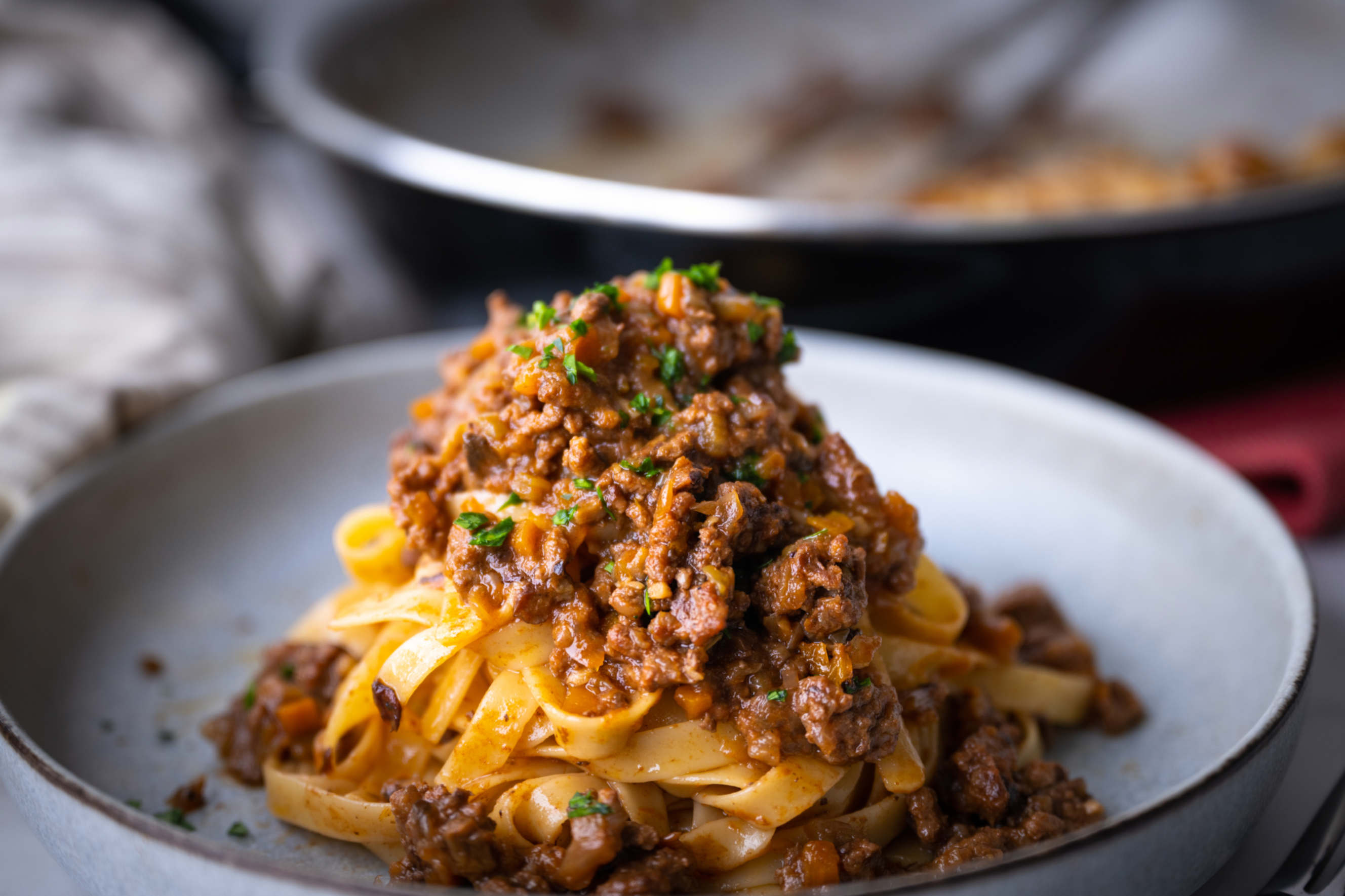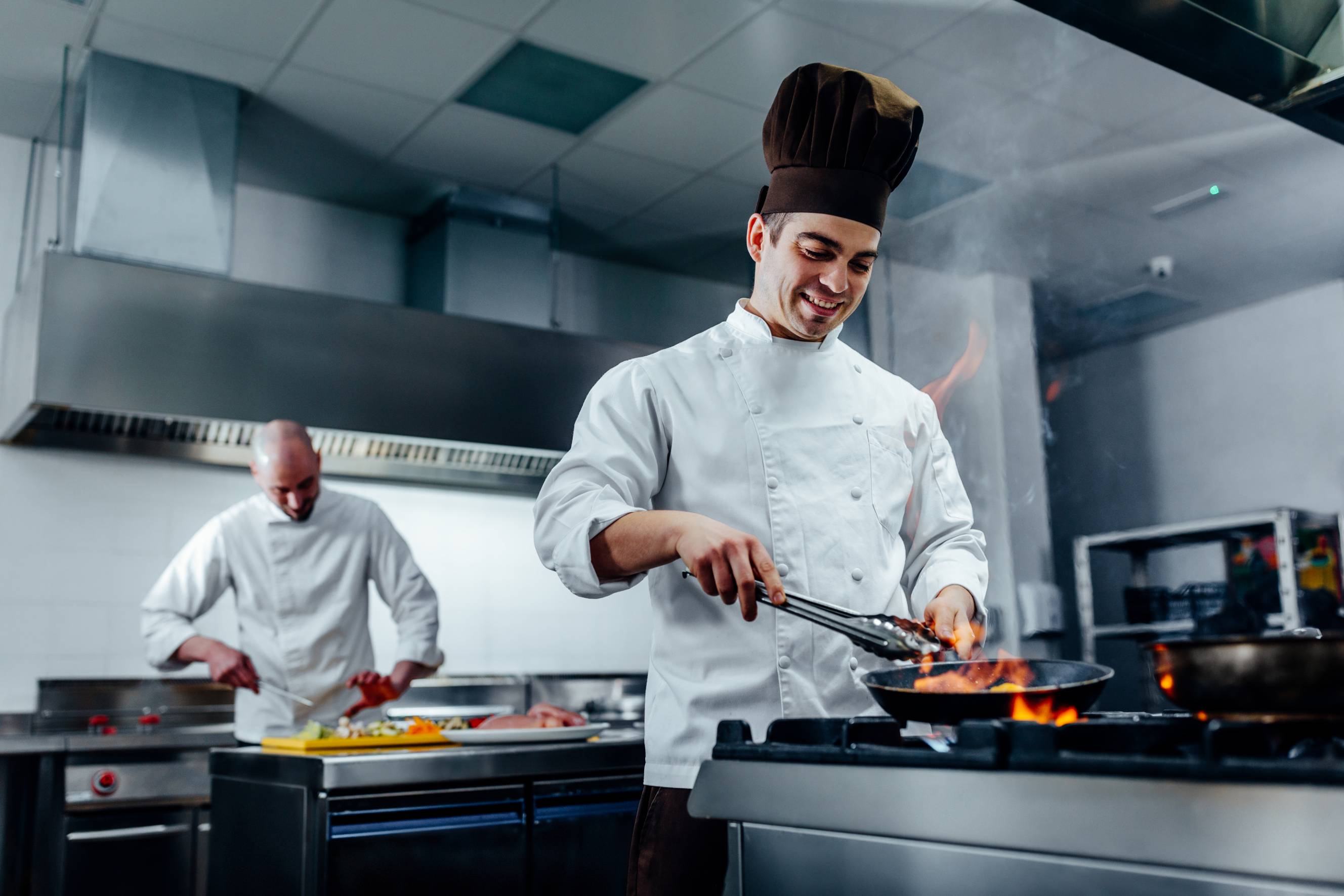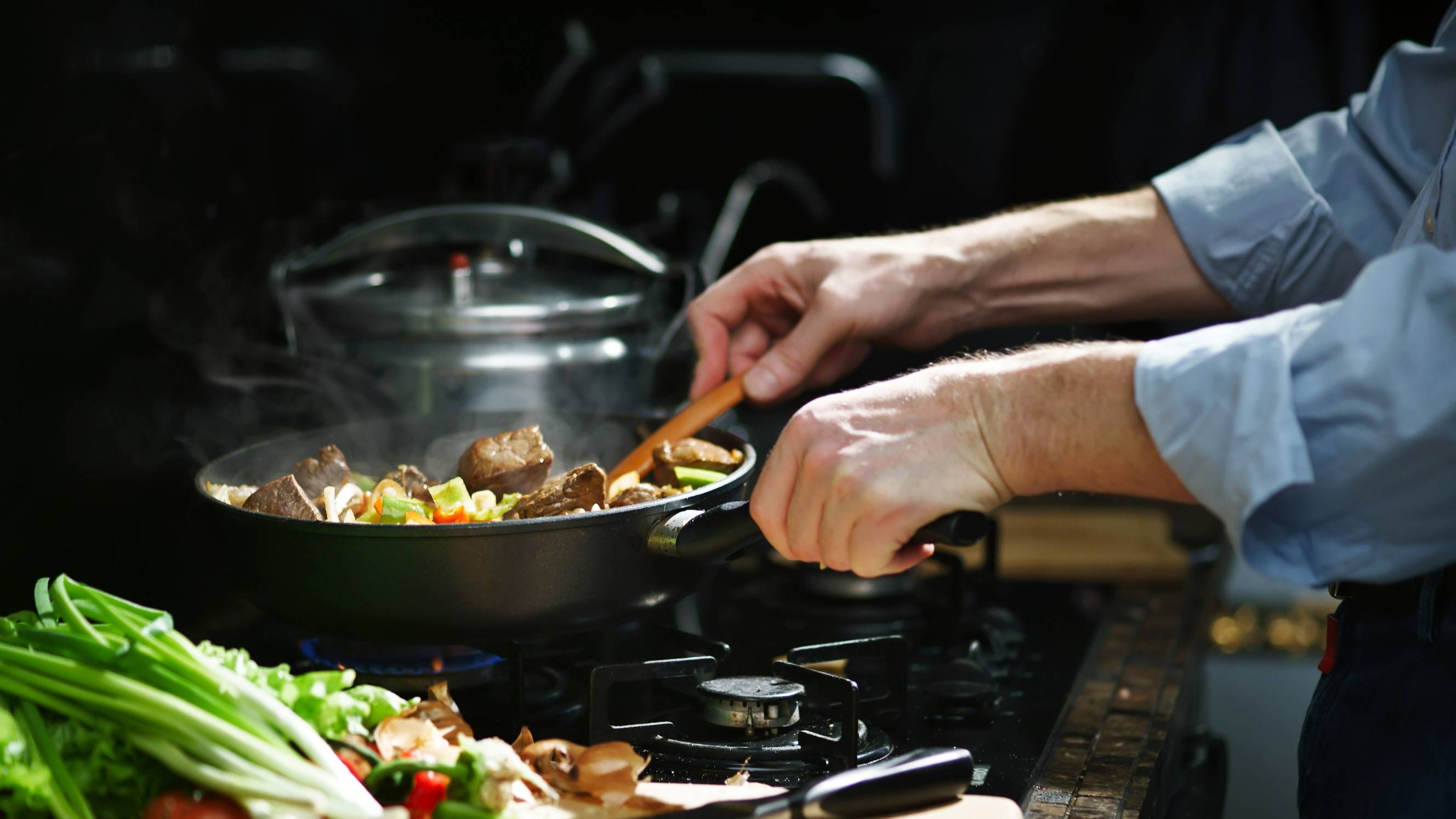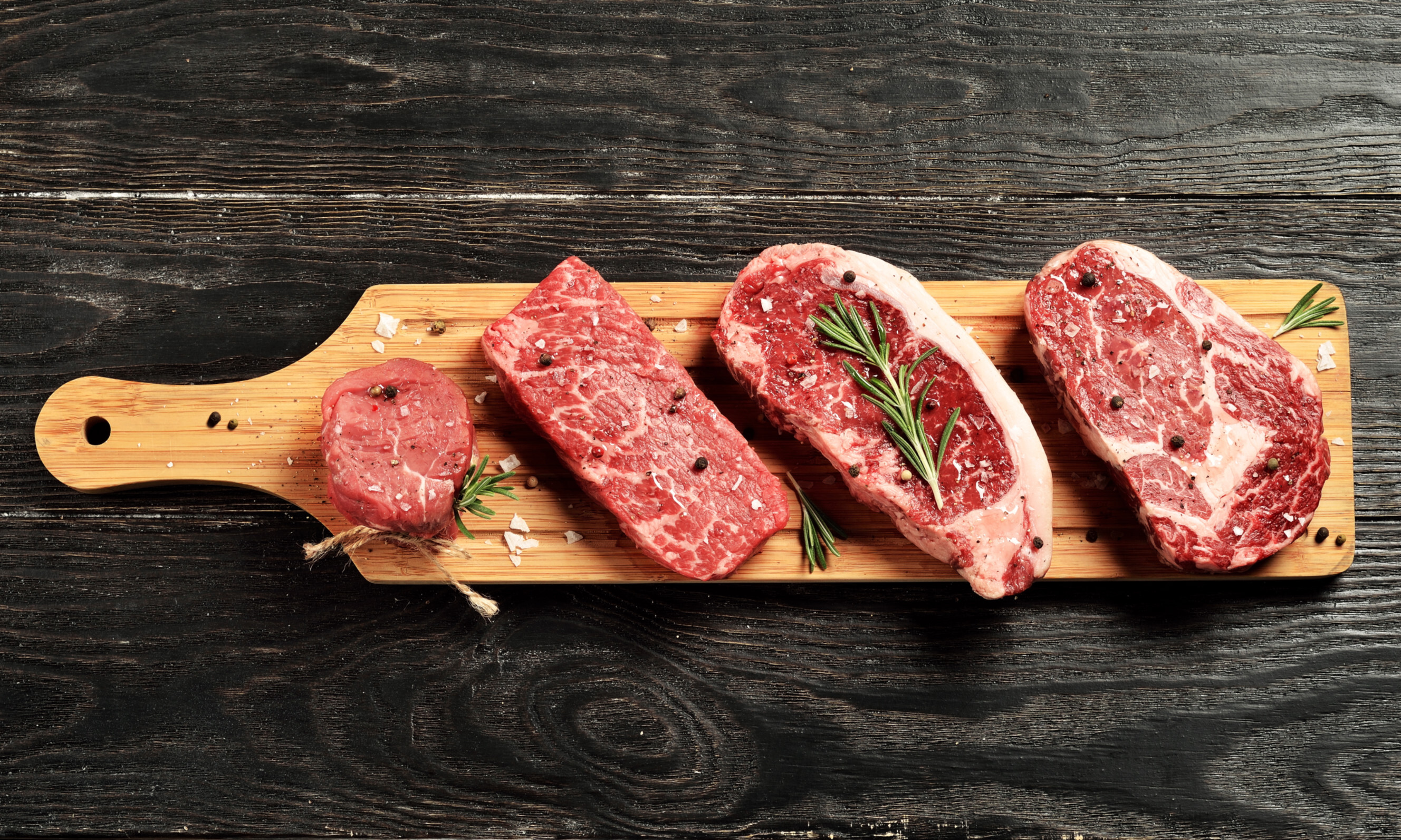
- Home/
- Comparisons/
- Chef/
- Ribeye vs Sirloin Steak
Ribeye vs. sirloin steak: Which cut should you choose?
Comparing cuts for flavor, tenderness, nutrition, and cooking versatility.
Published on

Written by Angela A.
Staff Writer
Read more about our contributor
Key Facts
- A ribeye steak is a tender, marbled cut known for its rich flavor and juiciness.
- A sirloin steak is a leaner cut that offers a good balance of tenderness and beefy taste, often at a more affordable price.
When it comes to steak, the choice of cut can define your entire meal. Each offers a distinct taste experience, so it can be tough to pick which deserves a spot on your plate.
No worries. This guide will walk you through the key differences between ribeye vs. sirloin steak. We’ll highlight the buttery richness of ribeye and the lean, satisfying bite of sirloin. Whether you’re grilling or pan-searing, we’ll help you choose the perfect cut to make your meal unforgettable.
What is a ribeye steak?
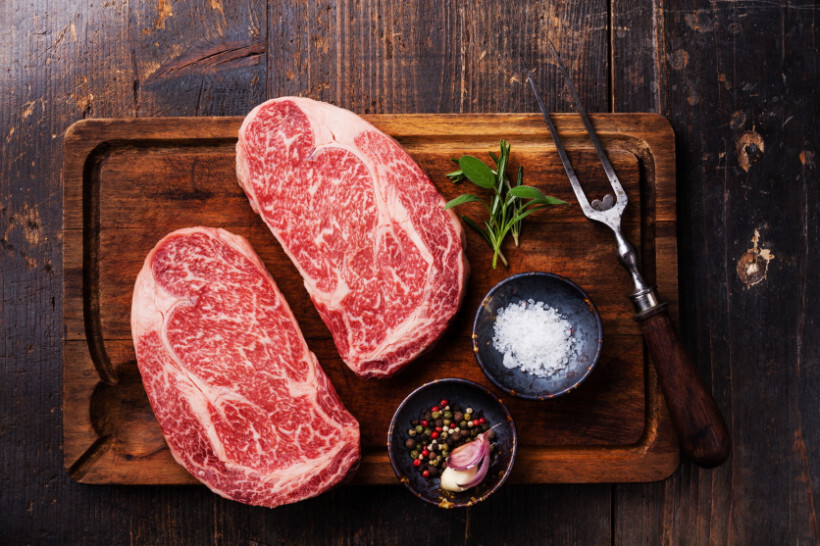 Ribeye steaks seasoned and ready to cook (Source: iStock)
Ribeye steaks seasoned and ready to cook (Source: iStock)
Ribeye steak comes from the cow’s rib section, specifically from ribs 12 through 13. This cut is renowned for its impressive marbling—those beautiful veins of white fat running throughout the meat.
When cooked, this fat melts and infuses the steak with a rich, buttery flavor and tenderness that’s hard to beat. You might hear ribeye referred to as Scotch fillet, Spencer, beauty steak, or even prime rib when it’s prepared as a whole roast.
What is a sirloin steak?
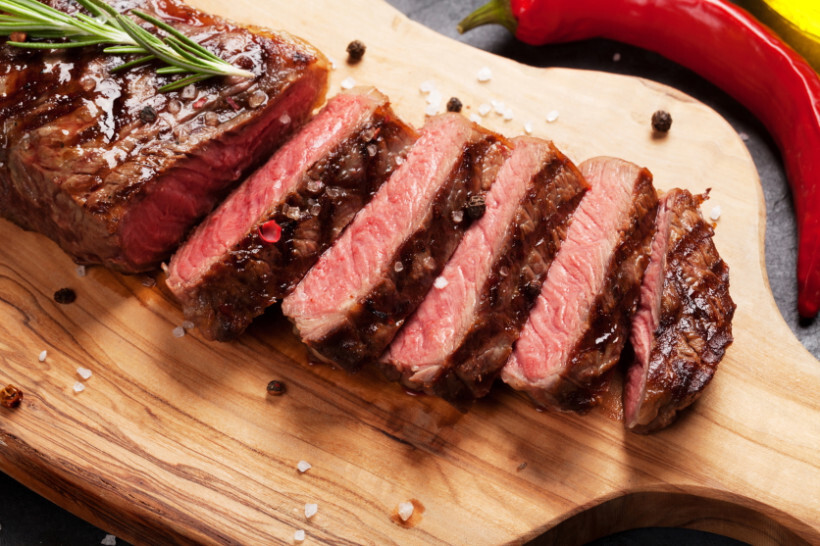 Sirloin steaks plated with healthy sides (Source: iStock)
Sirloin steaks plated with healthy sides (Source: iStock)
Sirloin steak comes from the area behind the ribs but in front of the rump. It’s generally leaner than ribeye, which means it has less marbling and offers a slightly milder flavor.
If you’re looking for something tender and tasty, it’s often your best bet. Meanwhile, the bottom sirloin is usually reserved for roasts. You might also hear sirloin referred to as Porterhouse or tri-tip.
Sirloin vs ribeye: What are their key differences?
When it comes to choosing between sirloin and ribeye steak, there’s a lot to consider. From the tenderness and flavor to the best cooking methods, we’ll explore the key factors that set these two different types of steak apart. By the end, you’ll be able to impress your friends and family at your next cookout.
In terms of marbling and fat content
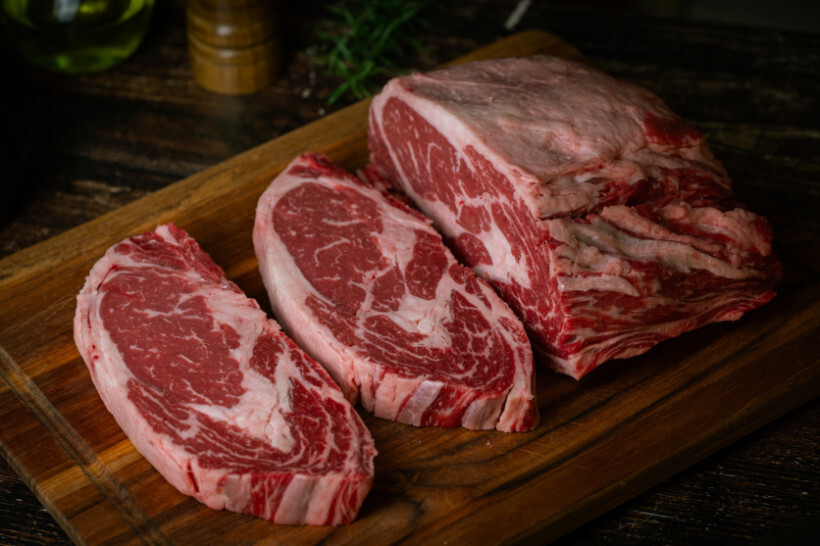 Thick-cut ribeye showcasing marbling and fat content (Source: iStock)
Thick-cut ribeye showcasing marbling and fat content (Source: iStock)
Ribeye steak is all about the marbling, with prominent veins of fat that give it a rich, buttery taste. On the other hand, sirloin is generally leaner and has less marbling, making it a healthier choice for those wondering which steak has less fat, sirloin or ribeye.
While the top sirloin retains some marbling, the bottom sirloin is leaner and often used in slow-cooked dishes. So, if you’re watching your fat intake, sirloin can be a better option without sacrificing too much on taste. In contrast, ribeye’s melt-in-your-mouth quality and succulent texture come directly from its higher fat levels, especially in cuts like the ribeye cap.
In terms of tenderness
Ribeye steak stands out for its exceptional tenderness, attributed to its high marbling. This high fat content makes ribeye juicy and contributes to its tenderness when cooked.
On the flip side, sirloin is generally leaner and less tender, especially when dry-aged. To preserve tenderness, some marinate it or cook it slowly to prevent drying out.
So, which is more tender: ribeye or sirloin? Well, it’s clear that ribeye and its natural juiciness win the day. However, remember that sirloin can still shine with the right preparation.
In terms of flavour and texture
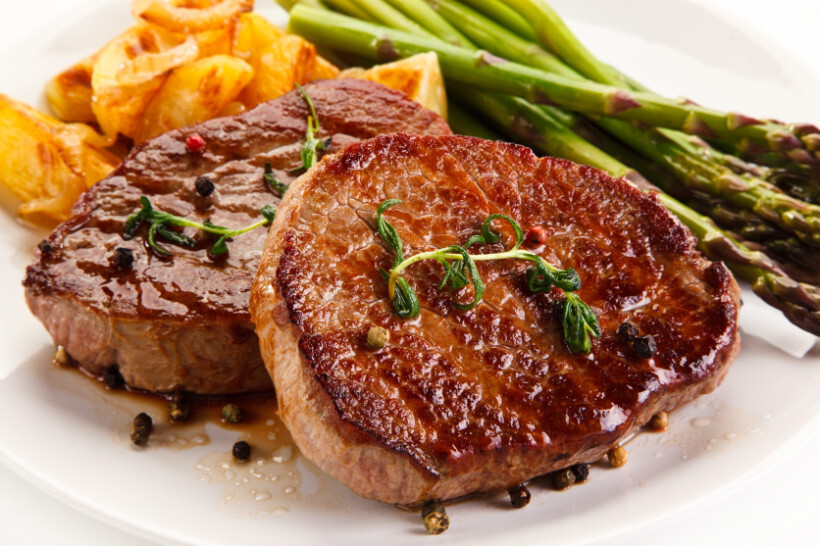 Juicy grilled steak sliced for serving (Source: iStock)
Juicy grilled steak sliced for serving (Source: iStock)
The difference between sirloin and ribeye is most apparent in their flavour profiles. Ribeye boasts a rich, buttery taste, making it one of the most flavourful cuts of beef. Meanwhile, sirloin has a milder taste.
The texture of these two cuts also varies significantly. Ribeye melts in your mouth due to the fat that breaks down during cooking. Sirloin, however, is lean and can be a bit chewier.
Ultimately, choosing between ribeye and sirloin comes down to personal preference. Ultimately, you can’t go wrong with either, as they both offer delicious, distinct beef taste.
In terms of cooking method
Grilling is a popular choice for steaks. However, ribeye’s fat content keeps it moist. You can cook it quickly either on a gas or charcoal BBQ, and it’ll always have a tender interior while achieving a perfect sear on the outside.
Sirloin can also be grilled, but its lean nature demands more attention to prevent dryness. It’s best cooked to medium-rare for optimum tenderness and juiciness, especially for top sirloin. Bottom sirloin, like tri-tip, does well with slower, indirect grilling to enhance its texture.
Ribeye also works well with pan-searing, especially in a cast-iron skillet. The fat helps caramelize the exterior while preserving juiciness inside. Sirloin can be pan-seared too, but needs careful temperature control—adding butter can help maintain moisture.
Additionally, bottom sirloin benefits from slow-cooking methods. This effectively breaks down tougher fibers for a more tender dish.
In terms of health impact
 Lean steak served with leafy greens and fruit (Source: iStock)
Lean steak served with leafy greens and fruit (Source: iStock)
When it comes to nutritional content, sirloin steak is lower in calories due to its leaner composition. It’s a fantastic source of high-quality protein, about 33g per 4 ounces to be exact, making it perfect for muscle building and repair. With lower total and saturated fat content, it also supports heart health and is often a better choice for those managing their weight.
On the other hand, ribeye steak is higher in calories, around 190 in 4-ounce portions, because of its significant marbling and fat content. While it also offers a good amount of protein, it has more saturated fat, which could affect the heart if enjoyed too frequently. Ribeye has higher levels of fat-soluble vitamins, though, so as long as portion sizes are kept in check, you can still enjoy nutritional benefits from this cut.
In terms of price
Down to the most popular question—Which is more expensive, ribeye or sirloin? Ribeye steak typically falls on the higher end of the spectrum, ranging from $9 to $28 per pound. They’re also often branded as premium cuts that restaurants may showcase.
Sirloin, on the other hand, is generally more affordable, ranging from $8 to $20 per pound. This makes it a popular choice for those looking for quality on a budget.
Factors influencing these prices include quality and grade, with top-tier options like grass-fed or organic ribeye driving costs up. Additionally, the source and origin play a significant role. Locally sourced and ethically raised meats often cost more than mass-produced varieties. Prices can also vary between retailers, with high-end butchers usually marking up their cuts.
If you’re a steak enthusiast and want to make the most of your purchase, it’s wise to ask a professional to handle the cooking. You can typically get a personal chef in the US for $100 to $400. It might seem pricey, but it’s a worthwhile investment to ensure that your preferred cut is prepared perfectly.
Level up your steak night with Airtasker
Whether you’re grilling or pan-searing, choosing the perfect cut can make your meal unforgettable. But it doesn’t stop there. To elevate your steak night further and free up your calendar, consider leaving the cooking to the pros.
On Airtasker, you can easily post a task and connect with skilled chefs who can prepare your steak just how you like it. Plus, if you’re looking for ingredients, there are services for meat delivery and getting fresh food to your door that can keep your kitchen stocked with top-quality options.
Post a task today and connect with experts who’ll help transform your next steak night into an exceptional culinary experience.
Learn more about our contributors

Written by Angela A.
Staff Writer
Angela Apolonio is an experienced writer with a Biology background. She writes about home tips, car upkeep, gardening hacks, and food facts, bringing a unique blend of science and practicality to her work. As a wife and a mother, she knows the value of iron-clad routines, so she's passionate about sharing what works for her with everyone else. She loves making everyday life simpler and helping readers find fresh ideas to bring more joy into their spaces.
Ribeye vs. sirloin steak
|
Ribeye Steak |
Sirloin Steak |
|
|---|---|---|
Marbling and Fat Content |
High marbling, rich in fat |
Leaner with less marbling |
Tenderness |
Exceptionally tender |
Less tender, can be chewy |
Flavor and Texture |
Rich, buttery flavor, melt-in-your-mouth texture |
Milder flavor, firmer texture |
Cooking Method |
Best grilled or pan-seared, stays juicy |
Grilled or pan-seared, needs careful cooking |
Health Impact |
Higher in calories and saturated fat |
Lower in calories and saturated fat, better protein source |
Price |
More expensive, premium cut |
Generally more affordable |
FAQs on ribeye and sirloin steak
No, beef roast refers to larger cuts cooked whole and sliced for serving, typically at lower temperatures. What’s the difference between beef and steak? Steak consists of smaller cuts cooked quickly at high temperatures.
The top sirloin is known for being lean and flavorful, containing less fat than other cuts. Other lean options include round steaks like the eye of round and sirloin tip.
Ribeye offers more flavor and juiciness due to its marbling, making it ideal for those who enjoy a rich taste. Tenderloin is better for those who prefer tenderness and a delicate texture.
Find chefs, fast
Post a task
Related guides
Related price guides
